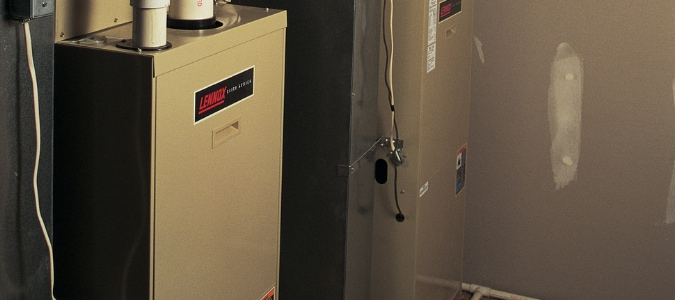Not all homeowners know that their furnaces need electricity to run smoothly. Yes, even gas furnaces. If your power goes out, so will your furnace, leaving you cold and miserable inside your home. Most of the time, you can reset the breaker, and your furnace will run smoothly again. That means it’s a temporary issue.
But that doesn’t always work. If your furnace keeps tripping the circuit breaker after resetting it, there’s a more serious issue at hand that requires the skills of an HVAC professional. Here are some possible reasons behind this problem.
Possible Reasons Your Furnace Keeps Tripping the Breaker
Don’t ignore it if the furnace breaker keeps tripping. It is a sign that there’s something wrong with the furnace. You have to address the issue before it becomes a safety concern. Here are some possible culprits behind the tripping problem.
Your Furnace Is Overloaded
When your furnace is overloaded, it has to work harder than it should, pulling in more electrical current than usual. If your furnace works for a while when you turn it on but suddenly trips the breaker, it’s likely an overloading problem. Several factors can cause this issue, including the following:
- Clogged air filter: Imagine pressing a towel up to your face and trying to breathe. It’s possible, but it requires more effort. It’s the same when your furnace’s filter is dirty or clogged. It has to work harder to suck air and produce airflow. That’s why it’s important to know how often to change the air filter in a house.
- Blocked or closed air vents: Return vents suck air into the furnace. But if they’re blocked, it will cause the same problem as clogged air filters. On the other hand, supply vents blow warm air into your home. But it’ll be harder for them to do their job if they’re closed.
- Deformed ductwork: If some ducts in your home are bent out of shape or crushed, it will restrict airflow and cause your furnace to work harder.
- Malfunctioning parts: If some components inside the furnace aren’t working efficiently, the whole system has to work harder to compensate.
The best way to prevent an overloaded furnace is to clean the air filter regularly. It is also a good habit to check the vents and ensure they are open and unobstructed.
The Capacitor Is Malfunctioning
The blower motor requires a lot of energy when starting up. The spike in power is large enough to trip the breaker. That’s where a capacitor comes in handy. Like a battery, the capacitor will release its stored energy to the blower motor as it gets itself going. If the capacitor isn’t working, the blower motor will get all the power from the electrical circuit. The additional amps can cause the breaker to trip. Fortunately, capacitors are easy for an HVAC professional, who knows how a furnace works, to replace.
The Blower Motor Is Defective
If the capacitor isn’t the problem, the blower motor might be to blame. A seized blower motor is one of the most common causes of a tripping furnace breaker. A professional can tell the blower motor has seized up by using their hands to turn it. If it is hard to rotate or it feels like it’s grinding against something, it may be time to get a new one.
But if it spins without issue, it’s likely a problem with the squirrel cage. It might be rubbing against the fan housing’s side, blocking the blower motor’s movement and causing the breaker to trip. An HVAC professional can try realigning the squirrel cage with the blower motor shaft to see if that fixes the issue. If not, they might have to replace the squirrel cage.
The Air Ducts Are Leaking
If you have leaking air ducts, the whole HVAC system becomes inefficient. Hot air is continuously escaping, causing the furnace to exert more effort. Any time the HVAC system works harder than usual, it can cause the breaker to trip. If you think your air ducts are leaking, contact an HVAC specialist. Ductwork maintenance and repair are complex processes that require the knowledge and skills of an expert.
The Shared Circuit Is Overloaded
Furnaces require a lot of power to run. If you have other appliances connected to the same circuit as the furnace, that could explain why the breaker keeps tripping. You can prevent this issue by having a dedicated circuit for your HVAC system. It is also possible that the circuit breaker is the problem, not the furnace. An HVAC pro can try tightening any loose electrical connections. If that doesn’t work, they might have to replace the breaker of the entire panel.
Contact an HVAC specialist immediately if the furnace breaker is tripping non-stop. It might be tempting to repair the issue yourself, but doing so can cause more damage.
How Does a High-Efficiency Furnace Work?
It is easier to deal with furnace problems when you know what kind you have at home. There are two main gas furnace types: conventional furnaces and high-efficiency furnaces. Like older conventional furnaces, high-energy furnaces suck cold air from your home, running it through an air filter. They also have a circulating fan and a gas burner. However, there are differences in the way they function.
Efficient Handling of Exhaust Gases
In conventional furnaces, exhaust gases flow from the combustion chamber straight into a metal flue and lead outside. It wastes a lot of heat because the gases are still hot when released. On the other hand, high-efficiency furnaces pass exhaust gases through another heat exchanger, which absorbs the remaining heat.
Built-In Heat Recovery Ventilator
Like conventional furnaces, high-efficiency furnaces reuse the air in your home in a loop. But aside from recirculating air, they also pull fresh air through cracks around doors and windows. This feature is helpful in homes with tight seals, sucking air from the outdoors and preventing partial vacuum pressure. High-efficiency furnaces use the remaining heat in the exhaust to preheat the fresh outdoor air.
Efficient Fuel Combustion
Conventional furnaces have single-stage gas valves, meaning your only option is to turn them on and off. But with high-efficiency furnaces, you get a variable-capacity valve, which gives you precise control. This advanced component allows these modern furnaces to run at 90% efficiency. To compare, traditional models are only at 80%. The boost in performance means shorter heating cycles and lower gas bills.
Insulated Blower Compartment
Most homeowners keep their furnaces in non-heated areas of the house, like a utility room. For this reason, conventional furnaces tend to lose heat through their blower compartments. That causes the system to work longer and harder. On the other hand, high-efficiency furnaces have insulated blower compartments, so you don’t have to worry about this issue regardless of location.
High-efficiency furnaces have advanced features that can save you money in the long run. However, homeowners must know they’re significantly more expensive than traditional models. You also have to spend more on the installation cost. You should consult an expert if you can’t decide between a conventional and a high-efficiency furnace. An HVAC professional will suggest the best furnace type for your home.
What Is a Limit Switch on a Furnace?
The limit switch may be a small device, but it’s essential to all forced-air furnaces using natural gas, heating oil or liquid propane. It switches the fan on and off during the heating cycle. Able to sense heat, it will turn off the furnace as a safety measure if the internal temperature becomes too high.
Limit switches can develop problems as furnaces get older. Their sensors, in particular, are prone to issues and can prevent the furnace from functioning normally. You can try to fix the sensor by cleaning the dirt and grime around it. Another common problem is when the blower fan won’t shut off. It happens when the limit switch won’t turn off even if the air exchanger has cooled and the burners have stopped.
A faulty limit switch can also prevent the furnace from working at all. Complete switch failure will leave it stuck in the off position, which means the furnace can’t run. Repeated overheating can have the same effect. If the switch hits the limit constantly and has to turn off the burner multiple times, it can force the control computer to shut down. You can’t turn on the furnace until a professional has repaired it.
Replacing a bad limit switch is best handled by a professional since it requires a good understanding of electrical issues. An HVAC professional will perform the necessary repairs and replacements and have your furnace running smoothly again.
Contact the Pros for Your Furnace Struggles
Furnaces make our homes cozy and comfortable during the colder months. But as helpful as they are, they are complicated appliances that can develop issues over time and raise our stress levels. If your furnace keeps tripping the breaker or its limit switch is broken, don’t hesitate to seek professional help. A licensed HVAC professional has the tools and expertise to restore your furnace to its efficient state.
ABC Can Solve Your Heating And Cooling Woes
Furnaces are complex systems, and trying to work on them without special training and tools can create larger problems and can even lead to damage to your home. Instead of taking these risks, contact the professionals at ABC Home & Commercial Services. Our licensed specialists are available all day and all night to handle any HVAC repairs or issue you may be having, like a furnace that won’t ignite.



